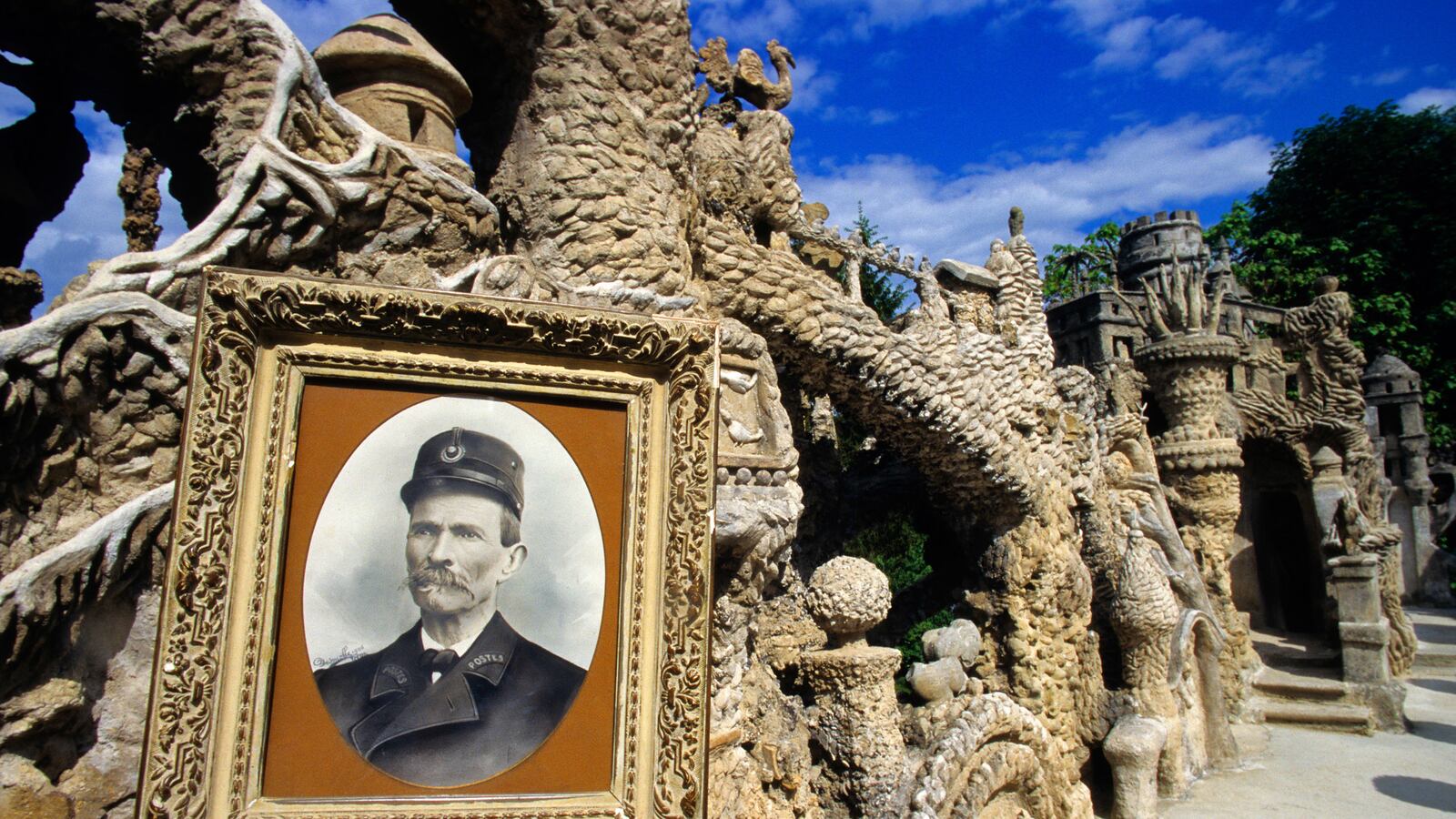Ferdinand Cheval was born the son of peasants in the tumultuous, newly democratic France. But as an old man, he became proprietor of a palace fit for a king—one he built stone-by-stone with his own two hands.
Cheval was born in 1836 in Charmes, France, and he chose to serve his small community as a postman. By the age of 43, he was living in Hauterives, a small town about 30 miles from Lyon, and was traveling an 18-mile mail route by foot each day.

It was during these walks that he began fantasizing about how to break the monotony of daily life. ”[C]onstantly walking in the same surroundings what could I do but dream?” he’d later write proudly in his autobiography. “[T]o change my mind, I used to build a fairy-like palace beyond imagination with all that the genius of a humble man could conceive.”
On one fateful day in 1879, events were put into motion to turn Cheval’s daydream into his full-fledged life’s mission. Walking his normal mail route, Cheval tripped over a stone in the ground. It was a strangely shaped block, due to the area once being underwater, and he took it home with him to examine closer. Inspired, he began picking up more stones each day and taking them home in his pockets. Later, he would walk his route pushing a sturdy wheelbarrow. On his way out, he'd deliver the day’s mail and then, returning home, he'd fill the wheelbarrow with stones.
“I thought: since nature wants to do the sculpture, I’ll do the masonry and the architecture,” he’d later write.
For the next 33 years, he singlehandedly constructed a palace in his garden, stone by stone. He didn’t actually begin building his vision until 1888, after a decade of collecting, and it took nearly 20 more years to gather all the stones he’d use. Holding the architectural smorgasbord of a castle together was cement, wire, and mortar.
At first, he named his creation The Temple of Nature, but later he changed it to be more precise: Palais Ideal, or the Ideal Palace.
The end result of Cheval's decades of labor, his lovechild, is a combination of the most famous architectural styles throughout history. The structure features ornately carved designs that mimic architecture from all corners of the world, from China to Europe and North Africa. There are Egyptian influences and an imitation Hindu temple. Hidden in the structure’s peaks, grottos, and balconies are creatures of all kinds: elephants, giants, birds, and fairies. Bulbous columns, winding staircases, and whimsical bas-reliefs of mythical creatures wrap around the palace. “The tongues started to wag in my home town and surrounding area," Cheval said of those unable to see his vision.
In 1912, Chevral's life's work was finally complete. The neighbors who once mocked him for this seemingly crazy project were in awe, and soon, people came from all over to see the palace. His little town was famous.
But he wasn’t done. He realized he’d need a castle just as grand for the afterlife. He had built a tomb within the palace, but for unknown reasons changed his mind about being put to rest there, and constructed the “Tomb of Silence and Eternal Rest” at a local cemetery. The tomb, though much smaller than the palace, is similarly a vision of ornate twists, arches, and peaks.
Ironically, Cheval’s lack of formal artistic training gave him credibility in the creative world. Artists now consider the Ideal Palace a piece of “naive” or “outsider” art. Andrew Breton called Cheval’s work an early version of Surrealistic architecture. Picasso was said to be a fan.
Cheval got to enjoy the fruits of his labor for a dozen years before he died in 1924 and was interred in his silent and restful tomb. Today, a bronze bust of the postman-turned-architect sits outside the post office and more than a hundred thousand people—nearly six times the local population—visit Hauterives each year to gawk at the maniacal pieces of architecture he left behind.
It may have taken Cheval a third of his lifetime to complete the Ideal Palace, but in the end, one stone transformed into the grand vision he'd day dreamt about so many years earlier. His handiwork work has survived a century.
“The word impossible no longer exists,” he wrote.






